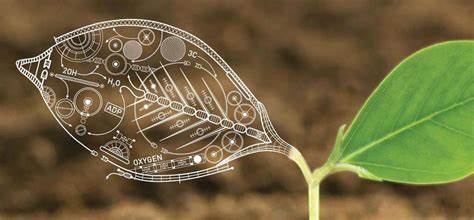部分AP生物核心词汇及解释整理
中国学生在学习AP生物课程时,专业词汇的掌握是一大重点和难点。今天A+国际教育小编为大家整理了一些重要的AP生物核心词汇及其解释,来看看同学们是不是都完全掌握了呢?

Mutagen(诱变剂):Any agent that induces genetic mutation.Examples:certain chemical substances,ultraviolet,light,radioactivity.
Mutation(突变):A permanent inheritable alteration in the DNA sequence or content of a cell.Mycelium(菌丝体):The filamentous mass that makes up a mold.Composed of hyphae.
narrow spectrum(窄谱):Denotes drugs that are selective and limited in their effects.For example,they inhibit either gram-negative or gram-positive bacteria,but not both.
negative stain(负染色):A staining technique that renders the background opaque or colored and leaves the object unstained so that it is outlined as a colorless area
nitrogen fixation(固氮):A process occurring in certain bacteria in which atmospheric Na gas is converted to a form(NH^usable by plants.
Nucleocapsid(核衣壳):In viruses,the close physical combination of the nucleic acid with its protective covering.
Nucleoid(拟核):The basophilic nuclear region or nuclear body that contains the bacterial chromosome.
Nutrient(营养物质):Any chemical substance that must be provided to a cell for normal metabolism and growth.Macronutrients are required in large amounts,and micronutrients in small amounts.
Obligate(专性的):Without alternative;restricted to a particular characteristic.Example:An obligate parasite survives and grows only in a host;an obligate aerobe must have oxygen to grow;an obligate anaerobe is destroyed by oxygen.
Parasite(寄生):An organism that lives on or within another organism(the host),from which it obtains nutrients and enjoys protection.The parasite produces some degree of harm in the host indirectly by donation of preformed immune substances(antibodies)produced in the body of another Individual.
Pasteurization(巴斯德消毒):Heat treatment of perishable fluids such as milk,fruit juices,or wine to destroy heat-sensitive vegetative cells,followed by rapid chilling to inhibit growth of survivors and germination of spores.It prevents infection and spoilage.
Pathogen(病原体):Any agent,usually a virus,bacterium,fungus,protozoan,or helminth,that causes disease.
Saprophytes(腐生型)Organisms that obtain their nutrients from decaying plants and animals.Saprophytes are important in recycling organic material.
Pathogenidty(致病性):The capacity of microbes to cause disease.
Pathology(病原学):The structural and physiological effects of disease on the body.
passive transport(被动扩散)Diffusion across a plasma membrane in which the cell expends no energy.
Penicillins(青霉素):A large group of naturally occurring and synthetic antibiotics produced by penicillium mold and active against the cell wall of bacteria.
Peptidoglycan(肽聚糖):A network of polysaccharide chains cross-linked by short peptides that forms the rigid part of bacterial cell walls.Gram-negative bacteria have a smaller amount of this rigid structure than do gram-positive bacteria.
Plasmids(质粒)Self-replicating,circular DNA molecules found in bacterial cells;often used as vectors in recombinant DNA technology.Small circles of double-stranded DNA found in some bacteria.Plasmids can carry from four to 20 genes.Plasmids are a commonly used vector in recombinant DNA studies.
periplasmic space(周质空间):The region between the cell wall and cell membrane of the cell envelopes of gram-negative bacteria.
Phage(噬菌体):A bacteriophage;a virus that specifically parasitizes bacteria.
Phenotype(表型):The observable characteristics of an organism produced by the interaction between its genetic potential(genotype)and the environment.
Photoautotroph(光能自养菌):An organism that utilizes light fa-ils energy and carbon dioxide chiefly for its'carbon needs.
Pilus(性丝)Projection from surface of a bacterial cell(F+)that can donate genetic material to another(F-)。
prokaryote cell(原核细胞):A small,simple cell lacking a true nucleus,a nuclear envelope,and membrane-enclosed organelles
prophage(前噬菌体):A lysogenized bacteriophage;a phage that is latently incorporated into the host chromosome instead of undergoing,viral replication and lysis.prophylactic Any device,method,or substance used to prevent disease.
Protoplast(原生质体):A bacterial cell whose cell wall is completely kicking and that is vulnerable to osmotic lysis.
Pseudohypha(假菌丝):A chain of easily separated,spherical to sausage-shaped yeast cells partitioned by constrictions rather than by septa.
Psychrophile(嗜冷菌):A microorganism that thrives at low temperature(0°-20°C),with a temperature optimum of 0°-15°C.
respiratory chain(呼吸链):In cellular respiration,a series of electron-carrying molecules that transfers energy-rich electrons and protons to molecular oxygen.In transit,energy is extracted and conserved in the form of ATP.
reverse transcriptase(逆转录酶):The enzyme possessed by retroviruses that carries out the reversion of RNA to DNA—a form of reverse transcription.
SCP(单细胞蛋白):Abbreviation for single-cell protein,a euphemistic expression for microbial protein intended for human and animal consumption……
selective media(选择培养基):Nutrient media designed to favor the growth of certain microbes and to inhibit.
Serotyping(血清型):The subdivision of a species or subspecies into an immunologic type,based upon antigenic characteristics.
sexual reproduction(有性繁殖)A system of reproduction in which two haploid sex cells fuse to produce a diploid zygote.
Spheroplast(球形体):A gram-negative cell whose peptidoglycan,when digested by lysozyme,
remains intact but is osmotically vulnerable
spike(刺突):A receptor on the surface of certain enveloped viruses that facilitates specific attachment to the host cell.
Spirillum(螺菌):A type of bacterial cell with a rigid spiral shape and external flagella.
Spirochete(螺旋体):A coiled,spiral-shaped bacterium that has endoflagella and flexes as it moves.
Sporangium(孢囊):A fungal cell in which asexual spores are formed by multiple cell cleavage.Sterilization(灭菌):Any process that completely removes or destroys all viable microorganisms,including viruses,from an object or habitat.Material so treated is sterile.
Strain(菌株):In microbiology,a set of descendants cloned from a common ancestor that retain the original characteristics.Any deviation from the original is a different strain.
subcellular vaccine(亚单位疫苗):A vaccine against isolated microbial antigens rather than against the entire organism.
superoxide ion(超氧离子):A toxic radical form oxygen metabolism
suppressor T cell(抑制T细胞):A class of T cells that inhibits the actions of B cells and other T cells.
temperate phage(温和噬菌体):A bacteriophage that enters into a less virulent state by becoming incorporated into the host genome as a prophage instead of in the vegetative or lytic form that eventually destroys the cell.
thermal death point(致死温度):The lowest temperature that achieves sterilization in a given quantity of broth culture upon a 10-minute exposure.Examples:55°C for Escherichia coil.60°C for
Mycobaaerium tuberculosis,and 120°C for spores.
thermal death time(热致死时间):The least time required to kill all cells of a culture at a specified temperature.
Therrnophlle(嗜热菌):A microorganism that thrives at a temperature of 50°C or higher.
T lymphocyte(T cell):A white blood cell that is processed in the thymus gland and is involved in cell-mediated immunity.
Toxoid(类毒素):A toxin that has been rendered nontoxic but is still capable of eliciting the formation of protective antitoxin antibodies;used in vaccines.
Transduction(转导):The transfer of genetic material from one bacterium to another by means of a bacteriophage vector.
Transformation(转化):In microbial genetics,the transfer of genetic material contained in"naked"DNA fragments from a donor cell to a competent recipient cell.
Transposon(转座):A DNA segment with an insertion sequence at each end,enabling it to migrate to another plasmid,to the bacterial chromosome,or to a bacteriophage.
Vaccine(免疫法):Originally used in reference to inoculation with the cowpox or vaccinia virus to protect against smallpox.In general,the term now pertains to injection of whole microbes(killed or attenuated),toxoids,or parts of microbes as a prevention or cure for disease.
Virold(类病毒):An infectious agent that,unlike a virion,lacks a capsid and consists of a closed circular RNA molecule.Although known viroids are all plant pathogens,it is conceivable that animal versions exist.
Zygospore(接合孢子):A thick-walled sexual spore produced by the zygomycete fungi.It develops from the union of two hyphae,each bearing nuclei of opposite mating types.
以上就是A+国际教育小编关于部分AP生物核心词汇的整理,希望同学们可以作为自己AP生物学习中的一份参考。如有问题,欢迎随时咨询我们的线上老师!
 喜欢 [0]
喜欢 [0] 相关推荐

猜你喜欢 More

2019-12-10
重要IGCSE经济知识点解析,这些要记下来!
2021-01-14
AP物理1和2区别对比,内容上有何差异?
2021-01-14
培训ib机构选择,考虑这几点
2019-07-16
alevel哪些科目比较好读?
















 官方微信
官方微信

 官方微博
官方微博
